The Dynamical Origin of the Graviton Mass in the Non-Linear Theory of Massive Gravity
Abstract
1. Introduction
2. Massive Gravity Formulation
3. The Schwarzschild de-Sitter Solution in dRGT
4. The Nambu-Goldstone Theorem: The Model
4.1. The Nambu-Goldstone Theorem
4.2. Charge Conservation
5. The Standard Higgs Mechanism: Local Gauge Symmetry
6. Massive Gravity in a Free-Falling Frame Of Reference
6.1. Case (i). Two Free-Parameters Satisfying the Condition
6.2. Case (ii). One Free-Parameter Case: Parameters Satisfying the Condition
7. Perturbation around a Free-Falling Frame
7.1. Case (i). Two Free-Parameters Satisfying the Condition
7.2. Case (ii). One Free-Parameter Case: Parameters Satisfying the Condition
7.2.1. Vanishing Spatial Dependence of the Stückelberg Function:
7.2.2. Non-Vanishing Spatial Dependence of the Stückelberg Function:
8. Symmetry Breaking Pattern and the Dynamical Origin of the Graviton Mass
Generic Character of the Dynamical Origin of the Graviton Mass
9. Conclusions
Funding
Acknowledgments
Conflicts of Interest
References
- Higgs, P.W. Broken Symmetries and the Masses of Gauge Bosons. Phys. Rev. Lett. 1964, 13, 508–509. [Google Scholar] [CrossRef]
- Englert, F.; Brout, R. Broken Symmetry and the Mass of Gauge Vector Mesons. Phys. Rev. Lett. 1964, 13, 321–323. [Google Scholar] [CrossRef]
- Nambu, Y.; Jona-Lasinio, G. Dynamical Model of Elementary Particles Based on an Analogy with Superconductivity. I. Phys. Rev. 1961, 122, 345. [Google Scholar] [CrossRef]
- Nambu, Y.; Jona-Lasinio, G. Dynamical Model of Elementary Particles Based on an Analogy with Superconductivity. II. Phys. Rev. 1961, 124, 246. [Google Scholar] [CrossRef]
- Porrati, M. Higgs Phenomenon for the Graviton in AdS Space. Mod. Phys. Lett. A 2003, 18, 1793–1802. [Google Scholar] [CrossRef]
- Arraut, I. The graviton Higgs mechanism. Europhys. Lett. 2015, 111, 61001. [Google Scholar] [CrossRef]
- Arraut, I.; Chelabi, K. Vacuum degeneracy in massive gravity: Multiplicity of fundamental scales. Mod. Phys. Lett. A 2017, 32, 1750112. [Google Scholar] [CrossRef]
- Arraut, I.; Chelabi, K. Non-linear massive gravity as a gravitational σ-model. Europhys. Lett. 2016, 115, 31001. [Google Scholar] [CrossRef]
- Kodama, H.; Arraut, I. Stability of the Schwarzschild–de Sitter black hole in the dRGT massive gravity theory. arXiv 2014, arXiv:1312.0370. [Google Scholar] [CrossRef]
- Arraut, I. On the apparent loss of predictability inside the de-Rham-Gabadadze-Tolley non-linear formulation of massive gravity: The Hawking radiation effect. Europhys. Lett. 2015, 109, 0002. [Google Scholar] [CrossRef]
- Arraut, I. Path-integral derivation of black-hole radiance inside the de-Rham–Gabadadze–Tolley formulation of massive gravity. Eur. Phys. J. C 2017, 77, 501. [Google Scholar] [CrossRef]
- Arraut, I. The Black Hole Radiation in Massive Gravity. Universe 2018, 4, 27. [Google Scholar] [CrossRef]
- De Rham, C.; Gabadadze, G.; Tolley, A.J. Resummation of Massive Gravity. Phys. Rev. Lett. 2011, 106, 231101. [Google Scholar] [CrossRef] [PubMed]
- De Rham, C.; Gabadadze, G. Generalization of the Fierz-Pauli action. Phys. Rev. D 2010, 82, 044020. [Google Scholar] [CrossRef]
- Hinterbichler, K. Theoretical aspects of massive gravity. Phys. Rev. D 2012, 84, 671. [Google Scholar] [CrossRef]
- Maldacena, J. The Large N limit of superconformal field theories and supergravity. Int. J. Theor. Phys. 1998, 38, 1113–1133, Published also in: Adv. Theor. Math. Phys. 1998, 2, 231–252. [Google Scholar] [CrossRef]
- Fritz, L.; Schmalian, J.; Mueller, M.; Sachdev, S. Quantum critical transport in clean graphene. Phys. Rev. B 2008, 78, 085416. [Google Scholar] [CrossRef]
- Mueller, M.; Schmalian, J.; Fritz, L. Graphene: A Nearly Perfect Fluid. Phys. Rev. Lett. 2009, 103, 025301. [Google Scholar] [CrossRef]
- De-Jong, M.J.M.; Molenkamp, L.W. Hydrodynamic electron flow in high-mobility wires. Phys. Rev. B 1995, 51, 13389. [Google Scholar] [CrossRef]
- Black, M. Momentum relaxation from the fluid/gravity correspondence. J. High Energy Phys. 2015, 2015, 10. [Google Scholar]
- Arraut, I. On the black holes in alternative theories of gravity: The case of nonlinear massive gravity. Int. J. Mod. Phys. D 2015, 24, 1550022. [Google Scholar] [CrossRef]
- Arraut, I. The Astrophysical Scales Set by the Cosmological Constant, Black-Hole Thermodynamics and Non-Linear Massive Gravity. Universe 2017, 3, 45. [Google Scholar] [CrossRef]
- Peskin, M.E.; Schroeder, D.V. An Introduction To Quantum Field Theory; Westview Press, Taylor Francis group: Boulder, CO, USA, 1995; Published again in 2018 by CRC Press, Taylor Francis Group, 6000 Broken Sound Parkway NW, Suite 300 Boca Raton Fl 33487-2742. [Google Scholar]
- Nielsen, H.B.; Chadha, S. On how to count Goldstone bosons. Nucl. Phys. B 1976, 105, 445–453. [Google Scholar] [CrossRef]
- Watanabe, H.; Brauner, T. On the number of Nambu-Goldstone bosons and its relation to charge densities. Phys. Rev. D 2011, 84, 125013. [Google Scholar] [CrossRef]
- Watanabe, H.; Brauner, T. Spontaneous breaking of continuous translational invariance. Phys. Rev. D 2012, 85, 085010. [Google Scholar] [CrossRef]
- Watanabe, H.; Murayama, H. Redundancies in Nambu-Goldstone Bosons. Phys. Rev. Lett. 2013, 110, 181601. [Google Scholar] [CrossRef] [PubMed]
- Watanabe, H.; Murayama, H. Effective Lagrangian for Nonrelativistic Systems. Phys. Rev. X 2014, 4, 031057. [Google Scholar] [CrossRef]
- Nambu, Y. Spontaneous Breaking of Lie and Current Algebras. J. Stat. Phys. V 2004, 115, 7–17. [Google Scholar] [CrossRef]
- Arraut, I. The origin of the mass of the Nambu-Goldstone bosons. Int. J. Mod. Phys. A 2018, 32, 1850041. [Google Scholar] [CrossRef]
- Arraut, I. Spontaneous symmetry breaking as a triangular relation between pairs of Goldstone bosons and the degenerate vacuum: Interactions of D-branes. arXiv 2017, arXiv:1705.02218. [Google Scholar]
- Arraut, I. The Quantum Yang Baxter conditions and the dispersion relations for the Nambu-Goldstone bosons. arXiv 2016, arXiv:1611.05035. [Google Scholar]
- Arraut, I. The Nambu-Goldstone theorem in non-relativistic systems. Int. J. Mod. Phys. A 2017, 32, 1750127. [Google Scholar] [CrossRef]
- Arraut, I. Komar mass function in the de Rham–Gabadadze–Tolley nonlinear theory of massive gravity. Phys. Rev. D 2014, 90, 124082. [Google Scholar] [CrossRef]
- Mirbabayi, M.; Gruzinov, A. Black hole discharge in massive electrodynamics and black hole disappearance in massive gravity. Phys. Rev. D 2013, 88, 064008. [Google Scholar] [CrossRef]
- Ryder, L.H. Quantum Field Theory; Cambridge University Press: Cambridge, UK, 1985. [Google Scholar]
- Veltman, M.J.G. Methods in Field Theory; Balian, R., Zinn-Justin, J., Eds.; Les Houches Lectures Session XXVIII: Amsterdam, The Netherlands; New York, NY, USA, 1975; pp. 289–291. [Google Scholar]
- Chamseddine, A.H.; Mukhanov, V. Higgs for Gravitons: Simple and Elegant Solution. arXiv 2010, arXiv:1002.3877. [Google Scholar] [CrossRef]
- Oda, I. Higgs Mechanism for Gravitons. Mod. Phys. Lett. A 2010, 25, 2411–2421. [Google Scholar] [CrossRef]
- Das, S.; Faizal, M.; Vagenas, E.C. Renormalizing gravity: A new insight into an old problem. arXiv 2018, arXiv:1805.05665. [Google Scholar] [CrossRef]
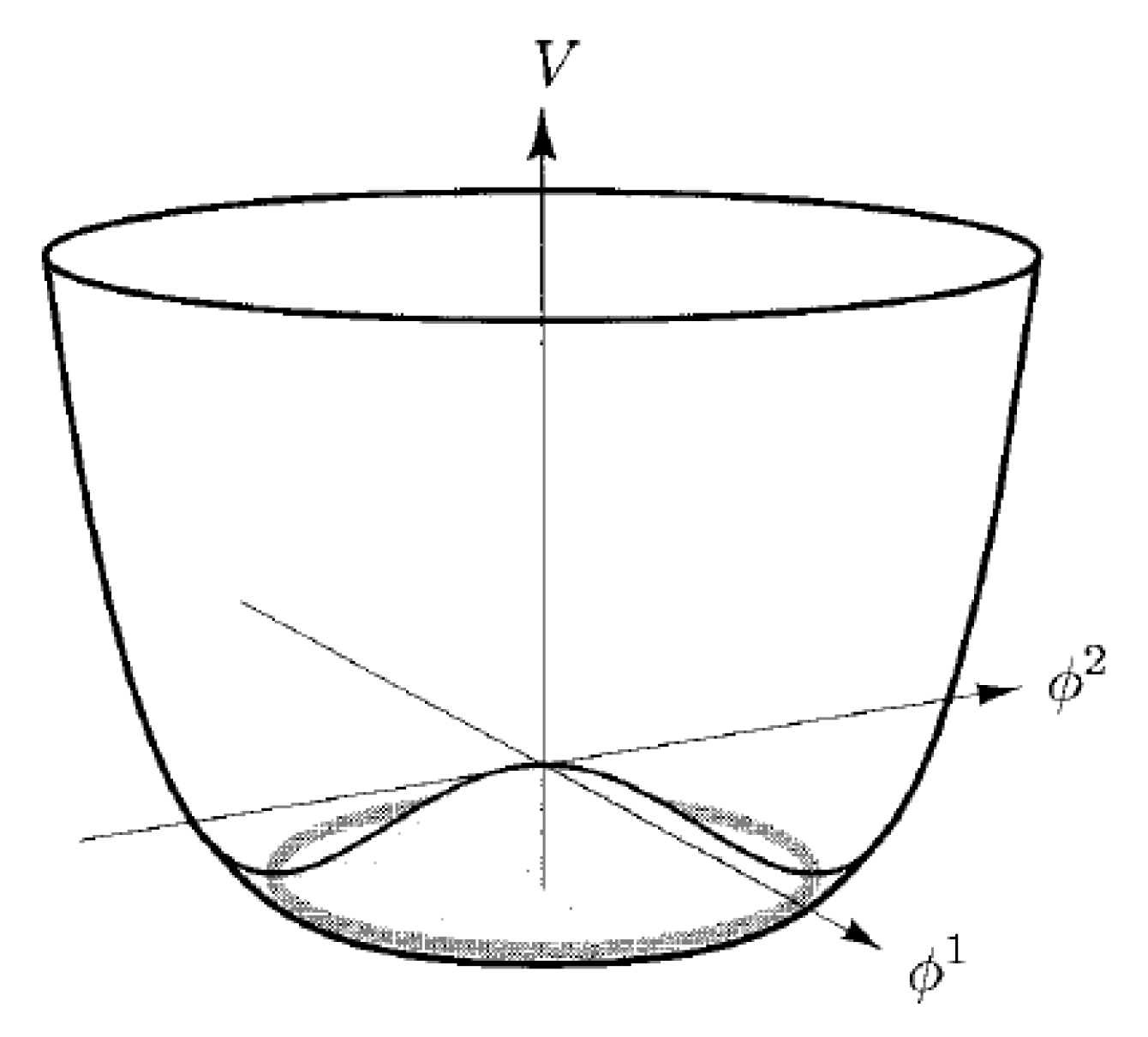
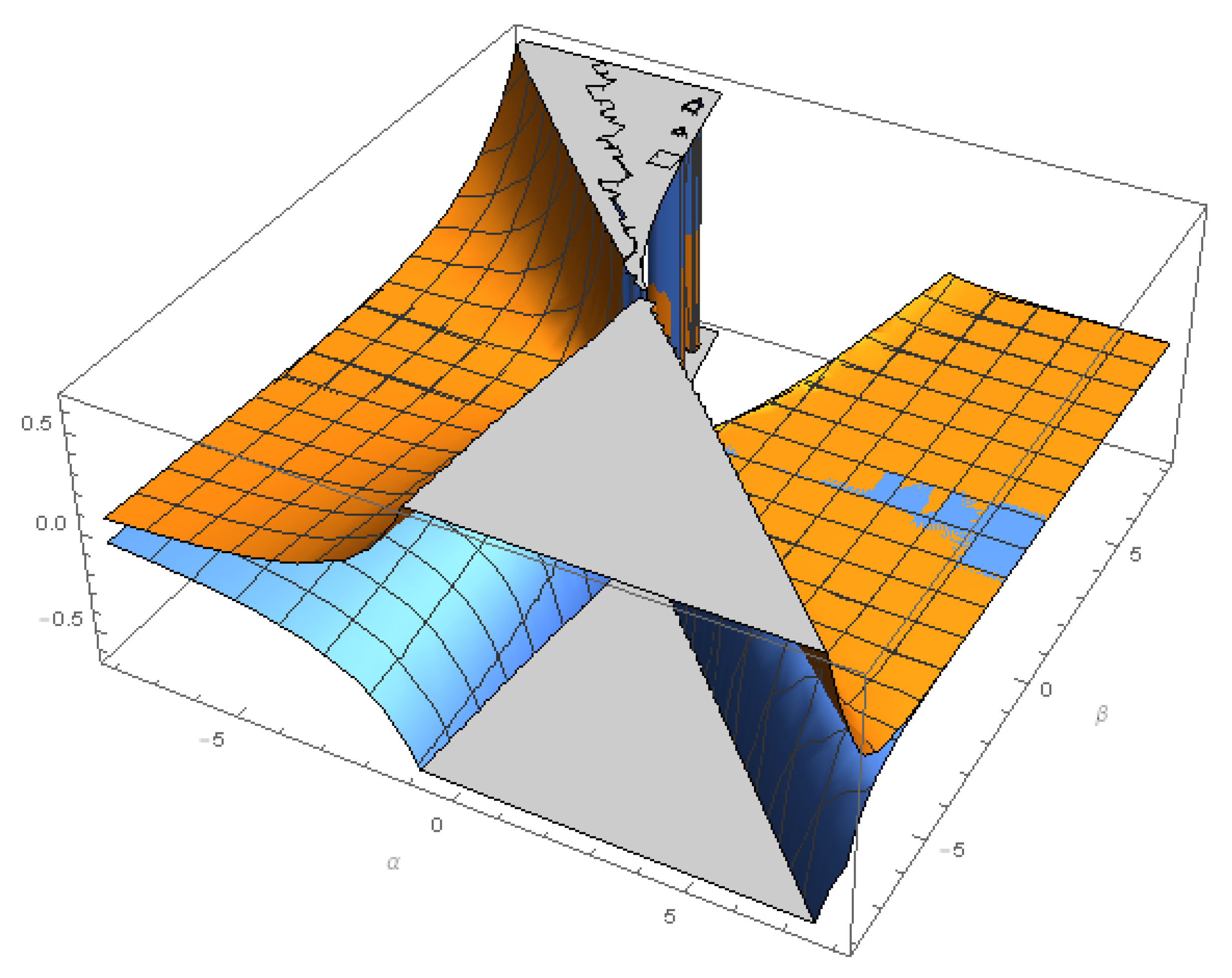
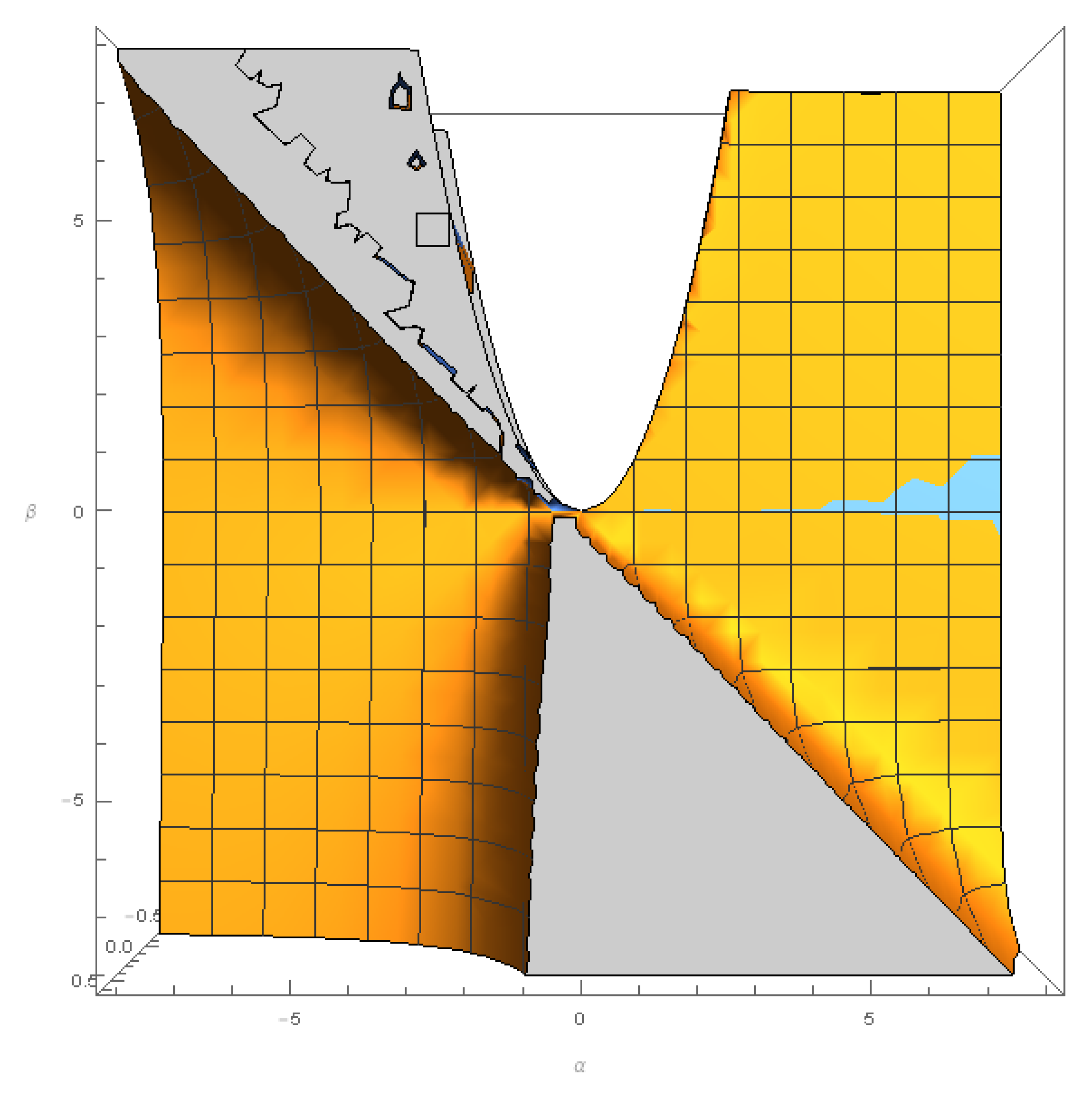
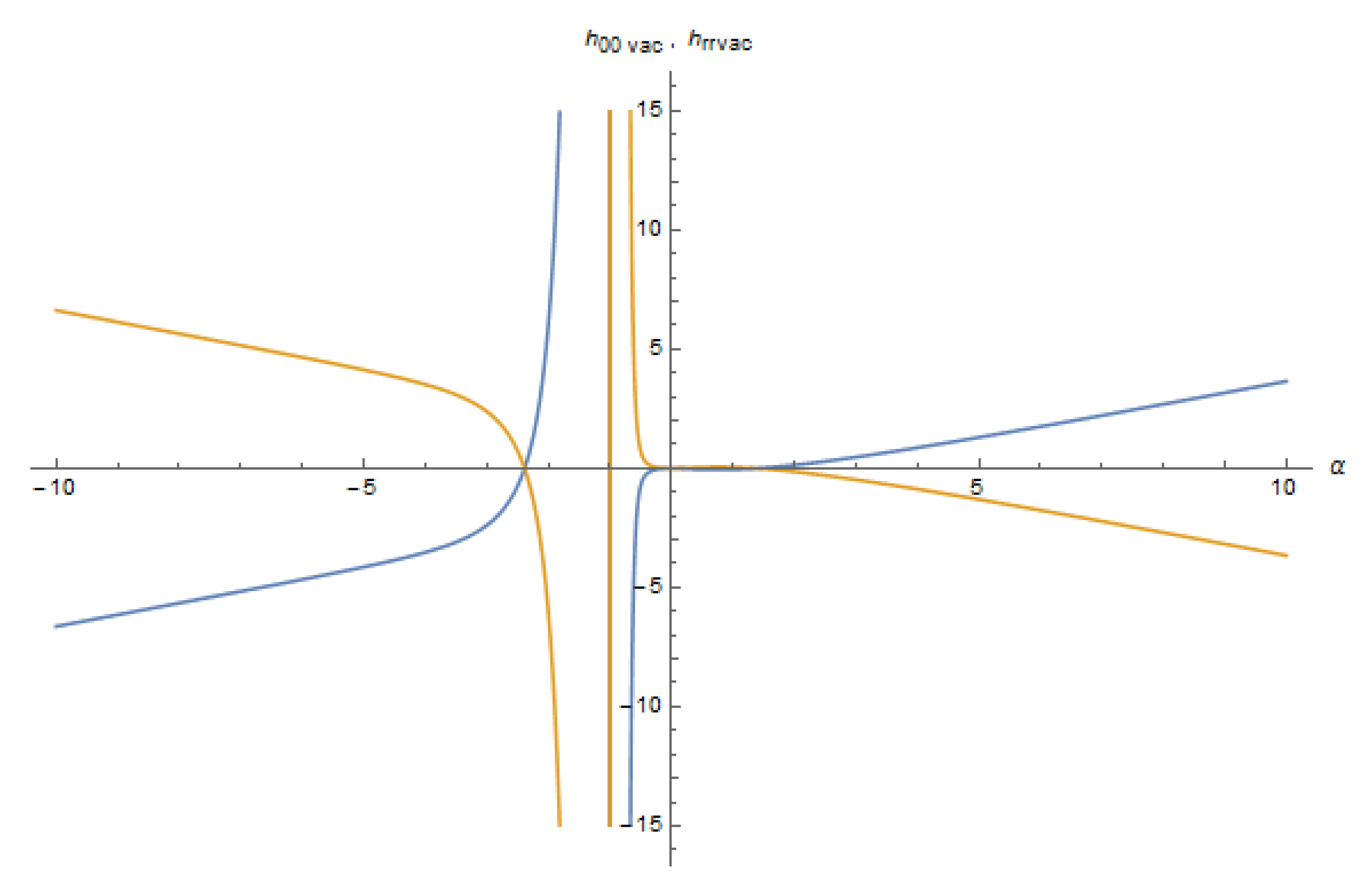
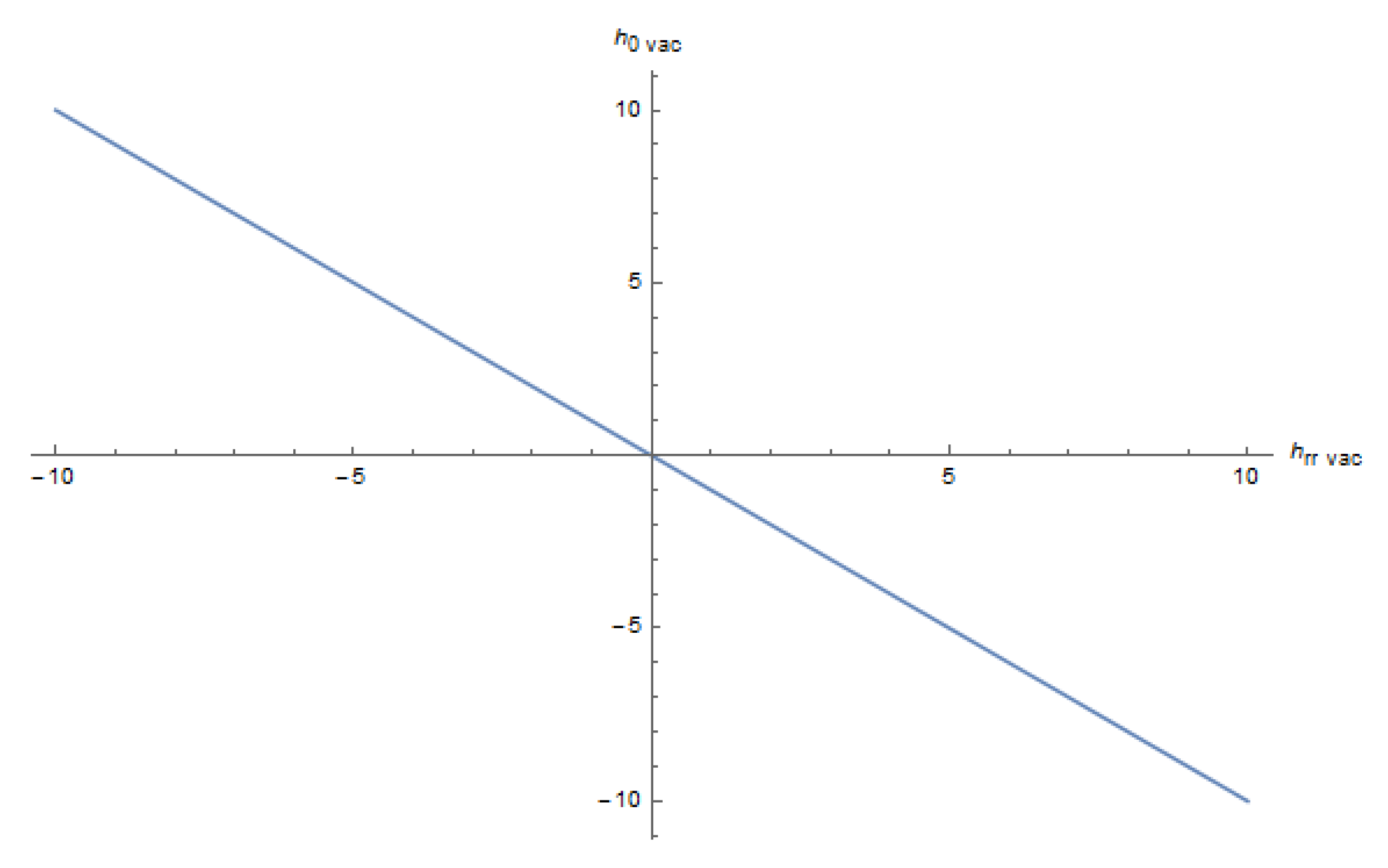

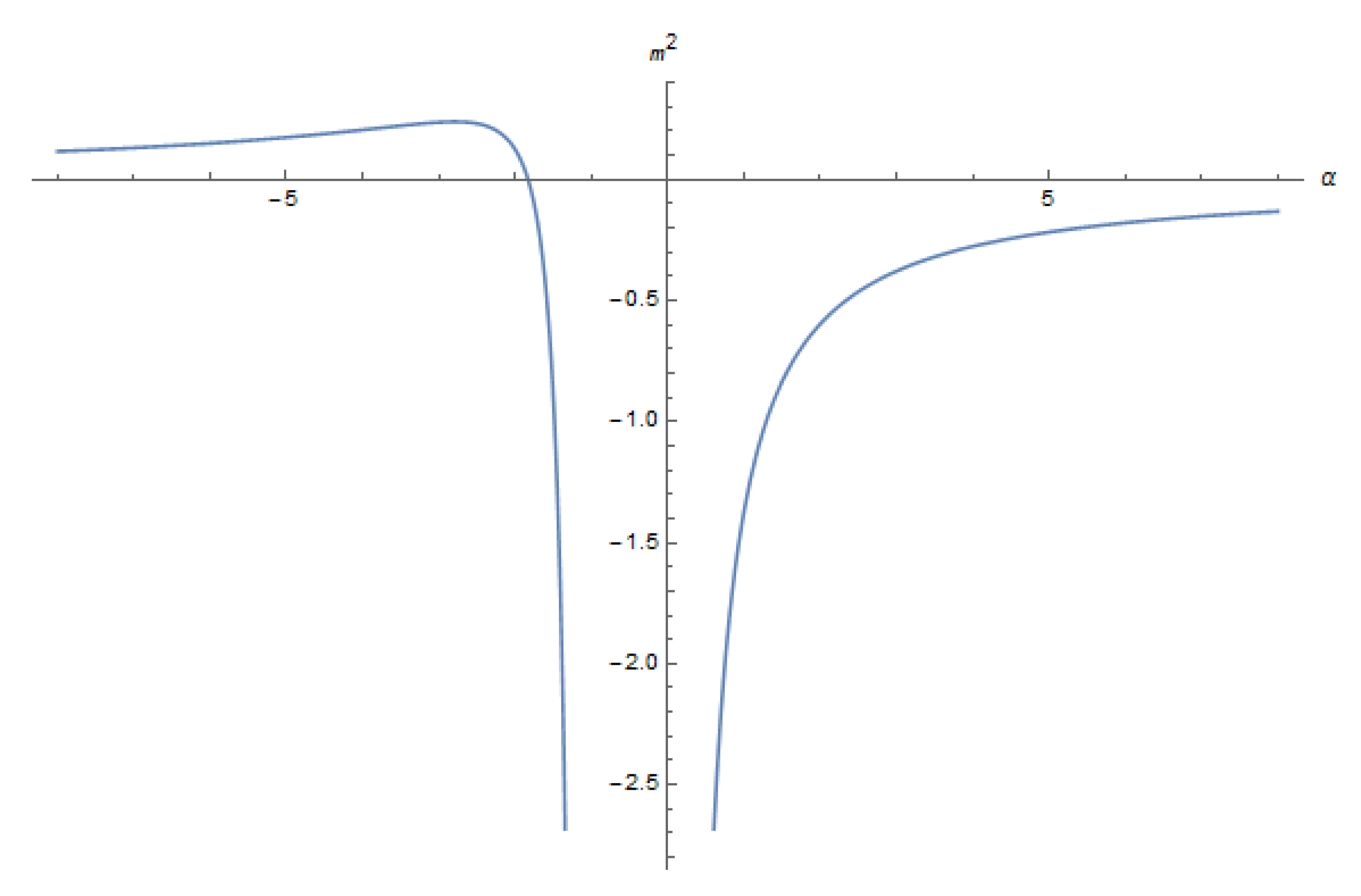
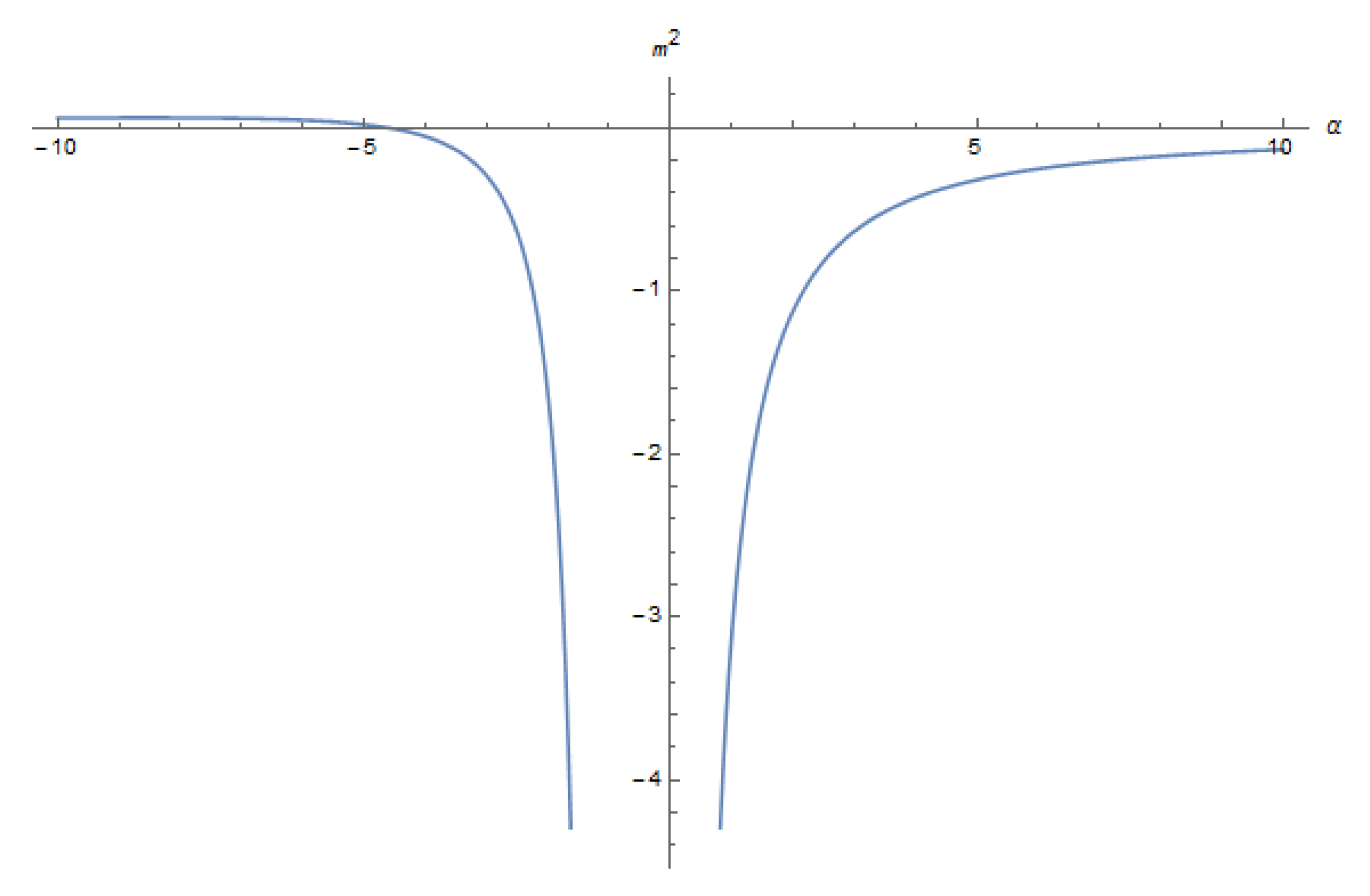

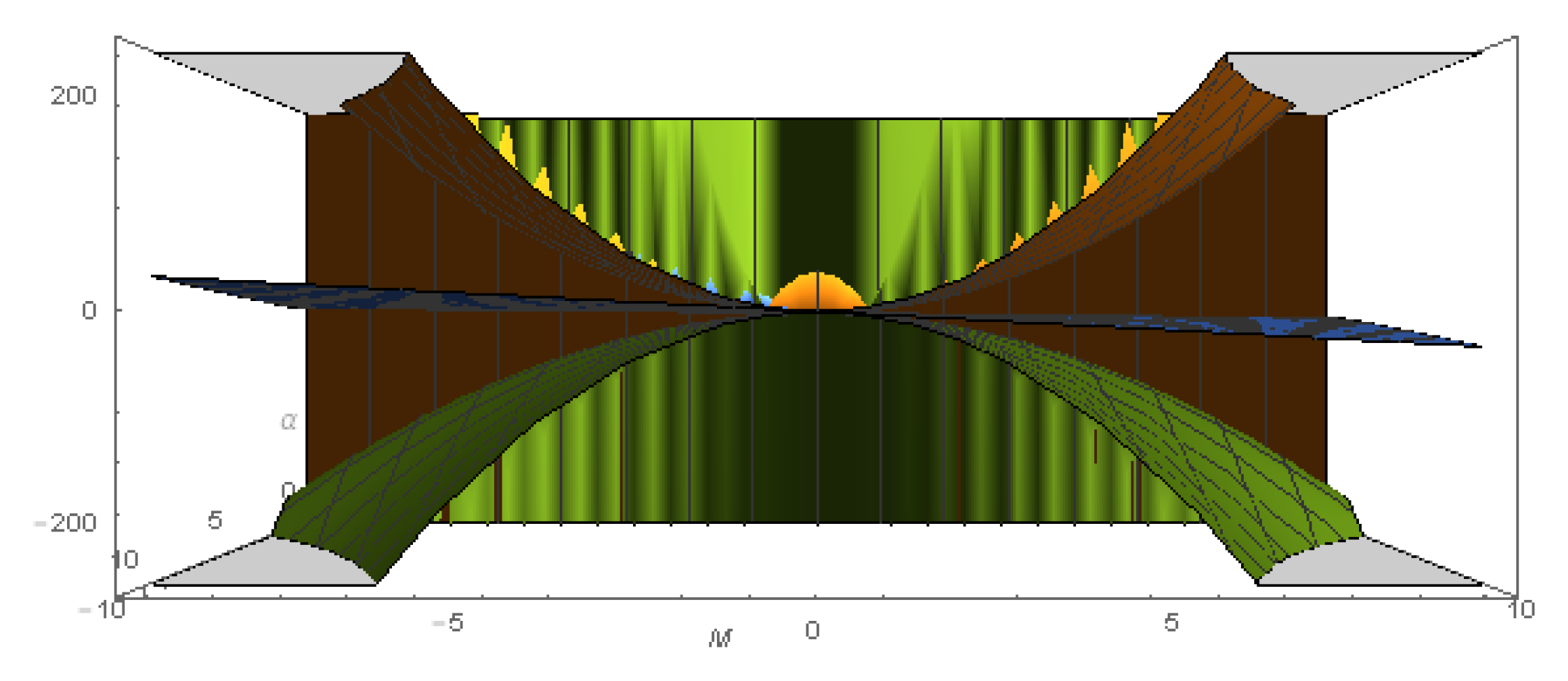
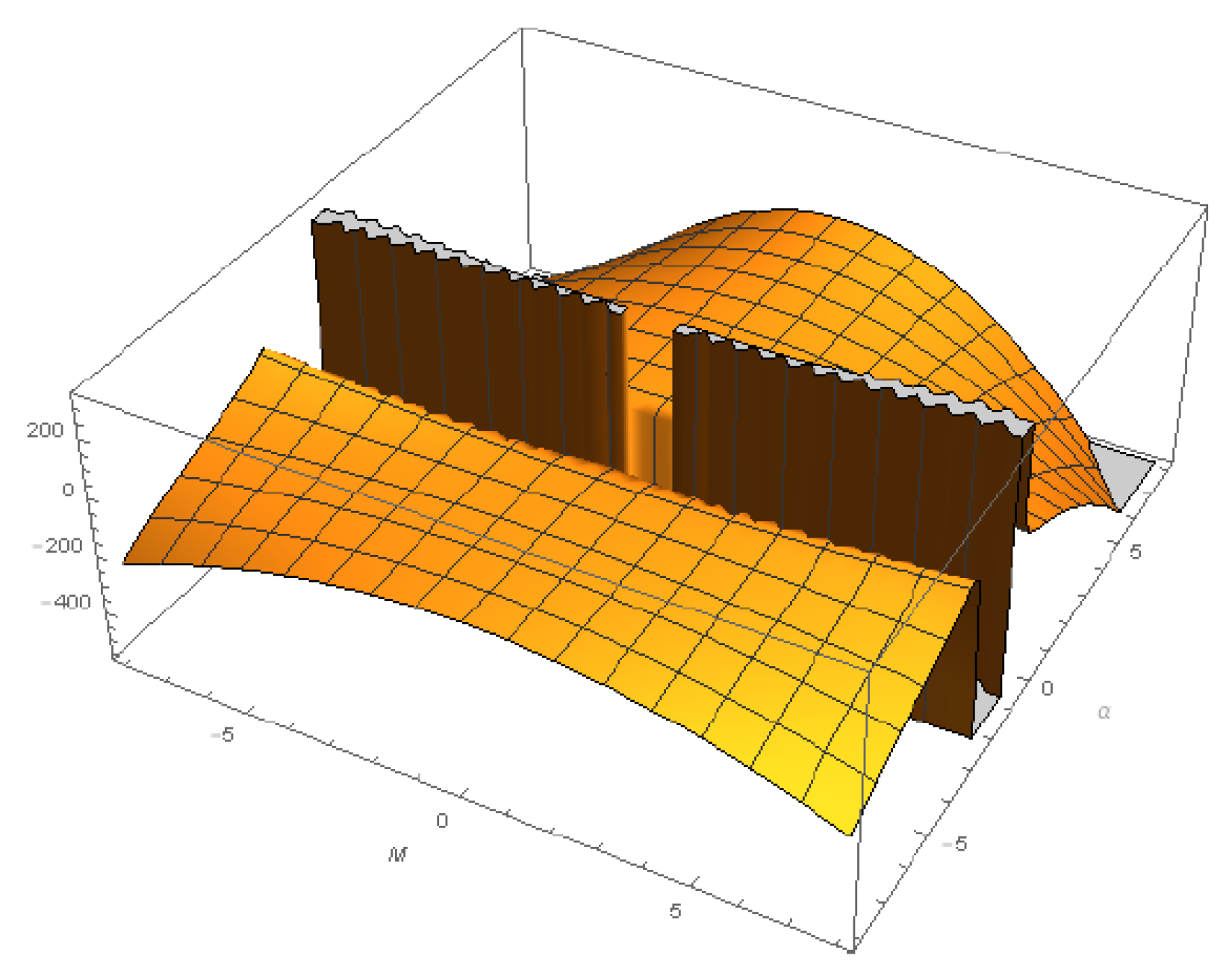
© 2019 by the author. Licensee MDPI, Basel, Switzerland. This article is an open access article distributed under the terms and conditions of the Creative Commons Attribution (CC BY) license (http://creativecommons.org/licenses/by/4.0/).
Share and Cite
Arraut, I. The Dynamical Origin of the Graviton Mass in the Non-Linear Theory of Massive Gravity. Universe 2019, 5, 166. https://doi.org/10.3390/universe5070166
Arraut I. The Dynamical Origin of the Graviton Mass in the Non-Linear Theory of Massive Gravity. Universe. 2019; 5(7):166. https://doi.org/10.3390/universe5070166
Chicago/Turabian StyleArraut, Ivan. 2019. "The Dynamical Origin of the Graviton Mass in the Non-Linear Theory of Massive Gravity" Universe 5, no. 7: 166. https://doi.org/10.3390/universe5070166
APA StyleArraut, I. (2019). The Dynamical Origin of the Graviton Mass in the Non-Linear Theory of Massive Gravity. Universe, 5(7), 166. https://doi.org/10.3390/universe5070166



